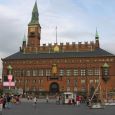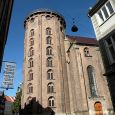Copenhagen
Advertisement
By Air
København Lufthavn (CPH), or Copenhagen International Airport, is the main gateway to the Danish capital and the means by which most international visitors arrive at the city. Located just eight kilometres from the city centre, it is among the world’s most modern and efficient air travel facilities. The airport is well connected to the city and onward destinations by trains, public buses, hotel shuttles and taxis. The airport serves flights to and from a vast number of EU cities as well as an impressive number of international destinations.
By Rail
It’s possible to reach Copenhagen by train from Danish cities using the country’s reliable rail network and also from international destinations via services such as the Eurostar. Danish State Railways (tel: + 45 70 13 14 15) provides domestic services, with the InterCity Lyn Express trains offering direct connections between Copenhagen and cities such as Odense, Fredericia, Århus, Esbjerg and Aalberg. International services arrive at and depart from Hovedbanegården central station, with connections to cities such as Stockholm, Oslo and Hamburg available from here.
By Bus
Eurolines connects Copenhagen with a variety of European cities including London, Amsterdam, Frankfurt, Oslo, Paris and Stockholm.
Church of our Savior
Christianshavn's Church of Our Saviour in Skt. Annæ Gade has a splendid Baroque altar decorated with figures and cherubs, a beautiful font and a richly carved organ case. The characteristic spire, with an external spiral staircase of 400 steps and a gilded figure of Christ standing on a globe, offers extensive views from the top.
Zoological Garden
To the west of Frederiksberg Palace lies the Zoological Garden (Zoologisk Have), one of the largest zoos in Europe. The enclosures are laid out so as to imitate the animals' natural surroundings as closely as possible. Visitors can watch polar bears, seals, lions and other animals being fed. At the entrance there is an observation tower. The zoo can boast a reptile house, a bird lake with storks and pelicans, a lion's den, a giraffe house, a monkey house, etc.
New Harbor
Charlottenburg Palace, on the east side of Kongens Nytorv, has been the home of the Royal Academy of Art since 1754. To the rear of the palace lies Nyhavn (New Harbor), which is flanked by a street of the same name. At the end of the harbor can be seen an anchor, placed there as a memorial to Danish sailors who lost their lives in the Second World War. Nyhavn was once a disreputable quarter of the city but now, with its brightly painted little gabled houses many of which contain restaurants or cafes, it is a very charming part of Copenhagen. Idyllic museum ships lie at anchor, including a lightship (Fyrskib) dating from 1885.
From Nyhavn there are hydrofoil and catamaran services to Sweden, as well as sightseeing trips round the harbor and along the canal.
Copenhagen Town Hall
The busy Town Hall Square (Rådhuspladsen) is dominated by Copenhagen Town Hall, which was built between 1892 and 1905 and is based partly on the Italian Renaissance and partly on medieval Danish architecture. The tower is 106m/350ft high and the building is richly adorned with sculpture and painting. Above the main entrance can be seen a figure of Bishop Absalon in gilded copper and in the Great Hall stand busts of Martin Nyrop, the architect who designed the building (d. 1921), the sculptor Bertel Thorvaldsen (1770-1840), Hans Christian Andersen (1805-76) and the physicist Niels Bohr (1885-1962). The World Clock at the main entrance which was designed and constructed by Jens Olsen in 1955 shows not only the time and date but also various astronomical constellations.
Round Tower
From Norregade in Copenhagen's Old Town narrow lanes lead into Fiolstræde, a parallel street with many bookshops and antique dealers. In Krystalgade can be seen the Synagogue, built in 1833 in yellow brick. Passing this the visitor will come to Købmagergade, a shopping street, with the Round Tower (Rundetarn), 36m/120ft high and 15m/50ft in diameter, which was built as an observatory in 1642 and now houses a small collection of material connected with the Danish astronomer Tycho Brahe. The platform, from the top of which there is a magnificent panoramic view of Copenhagen, is reached by a wide spiral ramp. The tower is the one referred to in Hans Christian Andersen's story "The Tinder Box" eyes as big as the Round Tower...".
A tour of the Old Town can continue by way of Skindergade and Kejsergade to Gråbrødretorv, one of Copenhagen's most charming squares with its brightly colored old houses. From here it is a short distance back to Nytorv by way of Strøget.
The Round Tower was briefly used by the astronomer Ole Rømer after his return from France until he decided it was too small for his purposes.
Stroget Pedestrian Zone
The 1.8km/1-mi long pedestrian zone, known as "Strøget" (meaning straight line or stretch), traverses the inner city. It is Copenhagen's most popular shopping street. Stroget consists of several roads criss-crossing one another, beginning at Town Hall square (Rådhuspladsen) and ending at Kongens Nytorv. Some adjoining streets on the north have also been pedestrianised. The streets are lined by many shops, boutiques and cafes.
April - October






